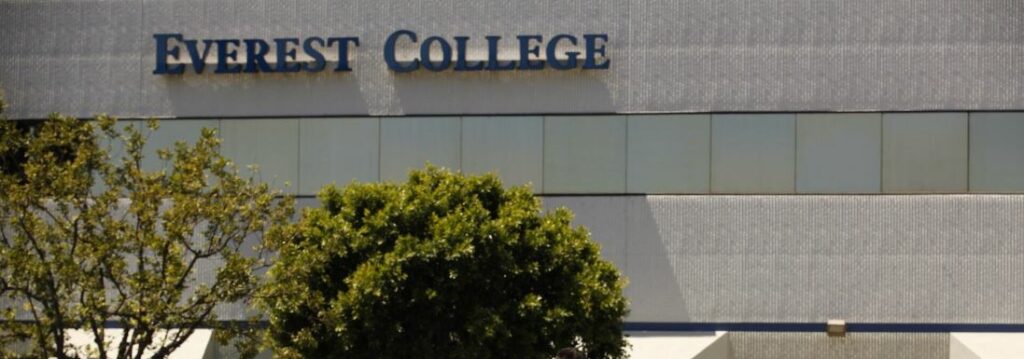Loan forgiveness programs can provide much-needed relief to borrowers who have incurred significant student loan debt. Several colleges and universities have been associated with loan forgiveness programs due to legal actions or settlements, offering potential opportunities for borrowers to seek loan forgiveness. In this article, we will explore some notable institutions and the loan forgiveness options available for students who attended these colleges.
- Corinthian Colleges: Corinthian Colleges, which operated schools such as Everest College, Heald College, and WyoTech, faced legal actions for deceptive practices. Students who attended these institutions may be eligible for loan forgiveness through programs like Borrower’s Defense to Repayment and Closed School Discharge.
- ITT Technical Institute: ITT Tech faced similar legal challenges, resulting in loan forgiveness options for eligible borrowers. Programs like Borrower’s Defense to Repayment may apply to students who attended ITT Tech and can demonstrate fraudulent practices by the institution.
- DeVry University: DeVry University has been associated with loan forgiveness due to allegations of misleading advertising and misrepresentation. Borrowers who attended DeVry may be eligible for loan forgiveness through the Borrower’s Defense to Repayment program.
- Art Institutes: The Art Institutes faced legal actions and settlements related to allegations of deceptive marketing and misrepresentation. Students who attended these institutions may have opportunities for loan forgiveness through Borrower’s Defense to Repayment or other applicable programs.
- University of Phoenix: The University of Phoenix, a well-known for-profit college, has been associated with loan forgiveness options due to legal actions. Borrowers may be eligible for loan forgiveness through Borrower’s Defense to Repayment or other applicable programs if they can demonstrate misconduct by the university.
50 list of colleges for student loan forgiveness
Here is a list of 50 colleges and universities that have been associated with loan forgiveness programs or legal actions that may provide opportunities for loan forgiveness:
- Corinthian Colleges (including Everest College, Heald College, and WyoTech)
- ITT Technical Institute
- DeVry University
- Art Institutes
- University of Phoenix
- Ashford University
- Kaplan University
- Brooks Institute
- Argosy University
- Career Education Corporation (including American InterContinental University and Colorado Technical University)
- Westwood College
- Le Cordon Bleu
- Sanford-Brown College
- Globe University
- Brown Mackie College
- Everest University
- National American University
- Virginia College
- Heritage College
- Kaplan Career Institute
- Bryant & Stratton College
- ECPI University
- Harrison College
- Marinello Schools of Beauty
- LeTourneau University
- Brightwood Career Institute
- Virginia School of Technology
- South University
- MedTech College
- Daymar College
- The College of Westchester
- Miller-Motte College
- New England Institute of Art
- American Career Institute
- Remington College
- Harrington College of Design
- Anthem College
- The Illinois Institute of Art
- International Academy of Design and Technology
- Sanford-Brown Institute
- Northcentral University
- Keiser University
- Brown College
- Sanford-Brown Institute
- Lincoln Technical Institute
- National College
- Virginia Marti College of Art and Design
- Herzing University
- Virginia School of Hair Design
- Fortis College

Understanding Loan Forgiveness Programs: Eligibility Criteria and Options
An overview of common loan forgiveness programs and their eligibility criteria:
| Loan Forgiveness Program | Eligibility Criteria |
|---|---|
| Public Service Loan Forgiveness (PSLF) | Work full-time for a qualifying employer (government or nonprofit) and make 120 qualifying loan payments while employed in a qualifying job. |
| Teacher Loan Forgiveness | Teach full-time for five consecutive years in a low-income school or educational service agency. |
| Perkins Loan Cancellation | Serve in certain professions, such as teaching, nursing, or law enforcement, and meet specific requirements outlined by the program. |
| Income-Driven Repayment Forgiveness | Enroll in an income-driven repayment plan and make qualifying payments for 20 or 25 years, depending on the specific plan. The remaining loan balance may be forgiven. |
| Borrower’s Defense to Repayment | Demonstrate that your school engaged in fraudulent or deceptive practices that directly affected your federal student loans. |
| Closed School Discharge | If your school closes while you’re enrolled or within 120 days of your withdrawal, you may be eligible for a discharge of your federal student loans. |
| Total and Permanent Disability Discharge | Have a total and permanent disability that prevents you from engaging in substantial gainful activity. |
| Military Service Loan Forgiveness | Serve in the military and meet specific requirements outlined by the program. |
| State-Specific Loan Forgiveness Programs | Various states offer loan forgiveness programs for specific professions or in exchange for working in underserved areas. Eligibility criteria vary by state and program. |
Please note that this table provides a general overview, and the specific eligibility criteria, requirements, and processes for each loan forgiveness program can vary. It’s important to research and verify the latest information and consult with the respective program or loan servicer to determine your eligibility and understand the application process.
Loan forgiveness programs offer potential relief for borrowers who attended colleges and universities involved in legal actions or settlements. It’s essential for affected students to explore their options and understand the eligibility criteria for different loan forgiveness programs. Contacting the U.S. Department of Education’s Federal Student Aid office or loan servicer can provide the most accurate and up-to-date information on loan forgiveness programs available for specific colleges and universities.
Remember to conduct thorough research and ensure the accuracy and currency of the information you include in your article. Additionally, consider expanding on each institution’s history, the nature of the legal actions, and any additional developments that have occurred since the time of my knowledge cutoff in September 2021.

